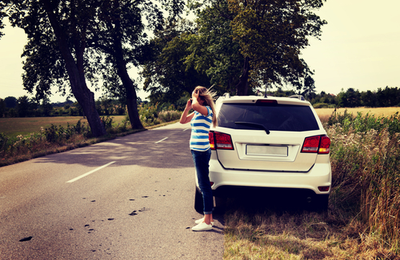What to do in the event of a breakdown? In Spain, for now, if a vehicle stops the triangles must be set up. The driver must put on the safety jacket, switch on the hazard lights and leave the vehicle to set up safety triangles.
One triangle must be placed in front and one behind at a minimum distance of 50 meters from the car and visible at a distance of 100 meters on two-way roads. If it is a one-way street, placing a triangle at the back is sufficient.
In this case, the user placing the triangles is at great risk, especially when the breakdown or accident occurs on highways or dual carriageways, where vehicles are traveling at high speeds.
In 2020 alone there were 92 pedestrian fatalities on intercity roads with 24-hour information, according to the Directorate General of Traffic (DGT) in Spain. In order to avoid this major risk for road users, the Spanish Traffic agency wants to replace the triangles with the V-16 luminous light signal.
This way, the driver only has to extend his/her arm to place the light on the vehicle's roof. This light offers increased visibility. On the one hand, the risk of being run over is completely reduced, as the user does not have to get out of the car and, on the other hand, the 360-degree visibility is increased.
This device can currently be used along with the triangles. We need to wait for the Traffic agency to make them compulsory, at which point a transition period will be given in which the user will be able to choose whether to use one element or the other to signal breakdowns or accidents. Subsequently, and with no foreseen date, only the use of the V-16 light signal will be mandatory.
To learn more and view this article source click here
Country
